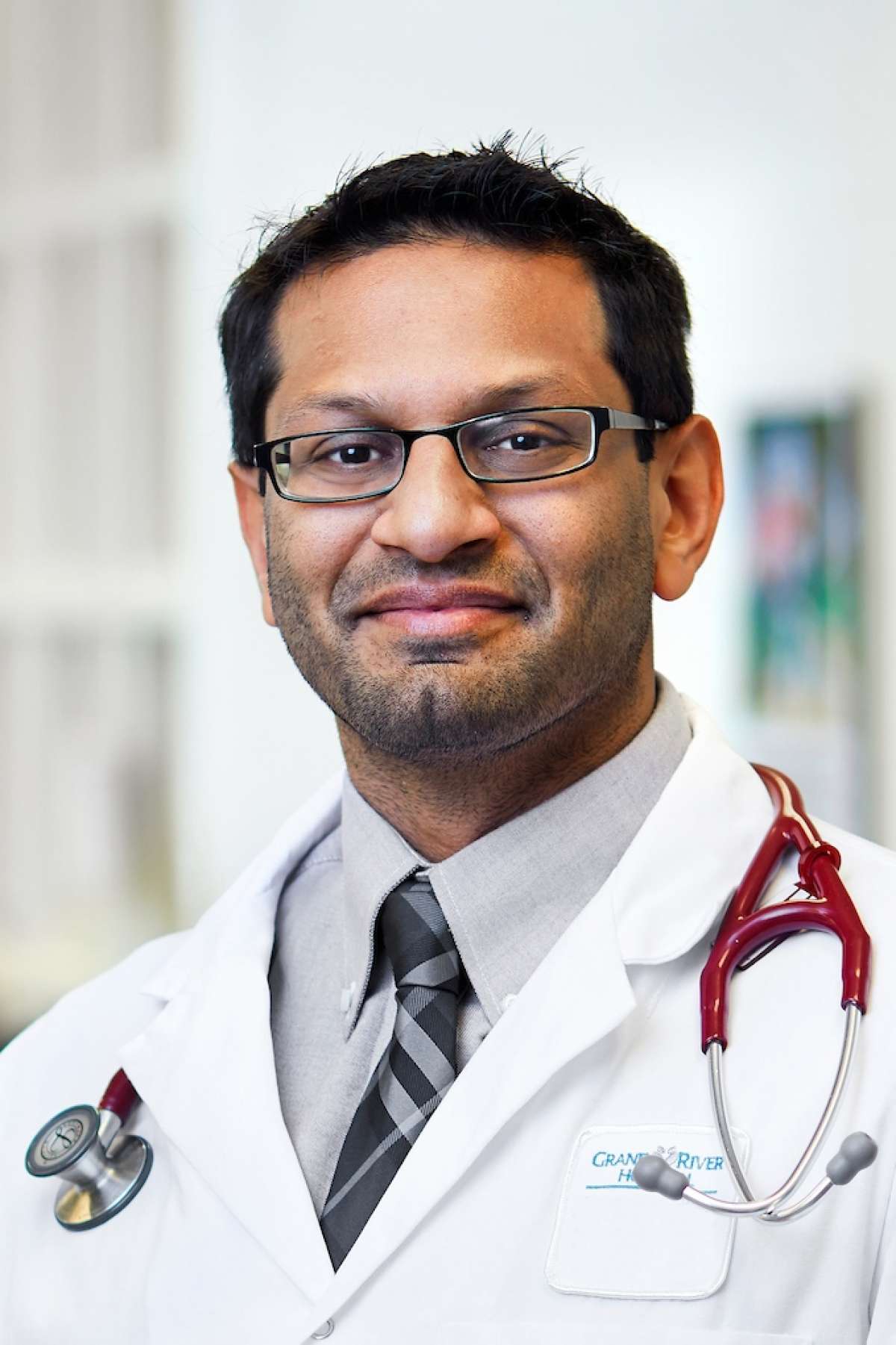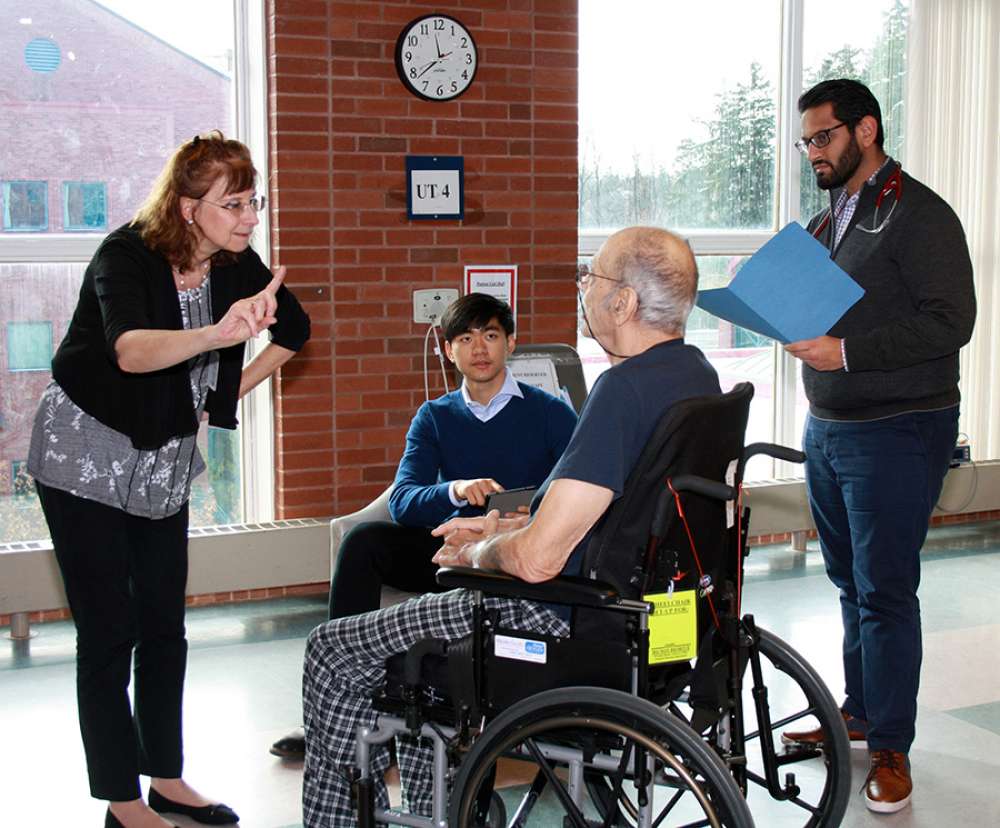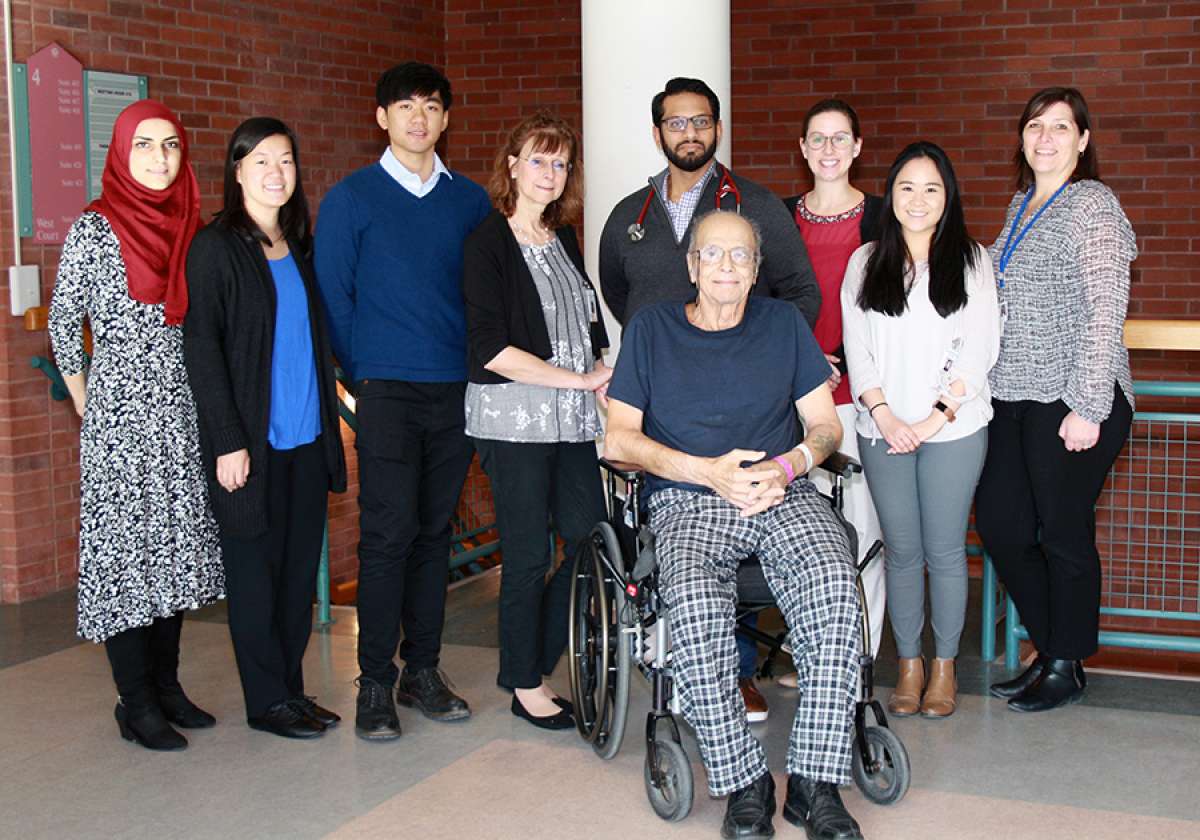Falls are the most common cause of injury among Canadians over 65 and one of the leading causes of injury-related hospitalizations among seniors. Vision loss is both a known risk factor for falls and very common among the hospital population. However, vision is not routinely assessed when patients are admitted to hospital, meaning staff may not be aware of the extent of a patient’s vision loss, making it challenging to take preventative measures.
Waterloo Regional Health Network has partnered with the University of Waterloo School of Optometry and Vision Science (WOVS) to study the vision of patients currently in hospital at our Freeport Campus to better understand current levels of vision loss among this group. The goal is to create a screening tool to identify patients who have poor vision to help healthcare providers take precaution to avoid falls.

Dr. Abhishek Narayan is the Chief of the Complex Continuing Care and Rehabilitation programs at WRHN’s Freeport Campus and is leading the study at the hospital. Dr. Narayan connected with UW professor and study lead, Dr. Susan Leat, after seeing her presentation on previous research on vision loss in patients in acute care settings at a WRHN hosted “Pizza with the Profs” session where researchers and innovators present their ideas to clinicians for feedback on real-world application.
“After learning about Dr. Leat’s previous research on vision loss in hospital patients, I saw an opportunity to expand the study to our rehabilitation patients here at Freeport,” says Dr. Narayan. “Our patients are more medically stable and often here for longer periods of time which allows us to look at things that aren’t traditionally addressed in an acute care setting.”
“When a patient is admitted to hospital, we do a good job of taking a patient’s history and determining their risk to falls, but the questions we ask don’t address vision. Data shows that eye drops are the most frequently missed medication which can contribute to the risk of falls. If we’re able to assess a patient’s vision in hospital, not only can we improve the care we provide to the patient, we can also help prevent readmission by helping patients’ understand their vision needs.”

The study itself is straightforward. Dr. Narayan and/or nurse practitioner, Donna Gill, recruits a patient to take part in the study and Dr. Leat and her team of optometry students work with the patient to complete an oral questionnaire as well as a brief vision screening. The vision screening, similar to a standard eye exam, measures four aspects of vision: sharpness of vision (visual acuity); ability to see and distinguish between shades of grey (contrast sensitivity); using finger counting to measure the field of vision (confrontation visual field); and the ability to judge distance (depth perception). These measures of vision are all known to be associated with the risk of falls. Each patient is given the results of their vision test to advise whether vision care is recommended after they are discharged.
The study team hopes the results of this research can help identify whether there is need to consider better access to vision care while in hospital while also helping patients who don't have adequate eye care gain access to these services. So far, 68 patients have been enrolled out of a goal of 100.
The study also surveys healthcare providers at WRHN to better understand how nurses, rehabilitation therapy staff, social workers, and other staff to consider vision needs of their patients.
“I’m hopeful this study will help create a screening tool including questions or tests to assess vision that will be used when patients come in to the hospital and eventually become part of the head to toe patient assessment,” says Dr. Narayan.
“This work has the potential to change the way we screen and identify the vision needs of patients as they come through the doors of our hospital and improve their quality of life as they return to community living,” says Dr. Tina Mah, vice president of research and innovation. “We are proud to partner with the University of Waterloo on this innovative research study. We have a strong and productive partnership between our two organizations with the shared goal of advancing research and care in our region.”



